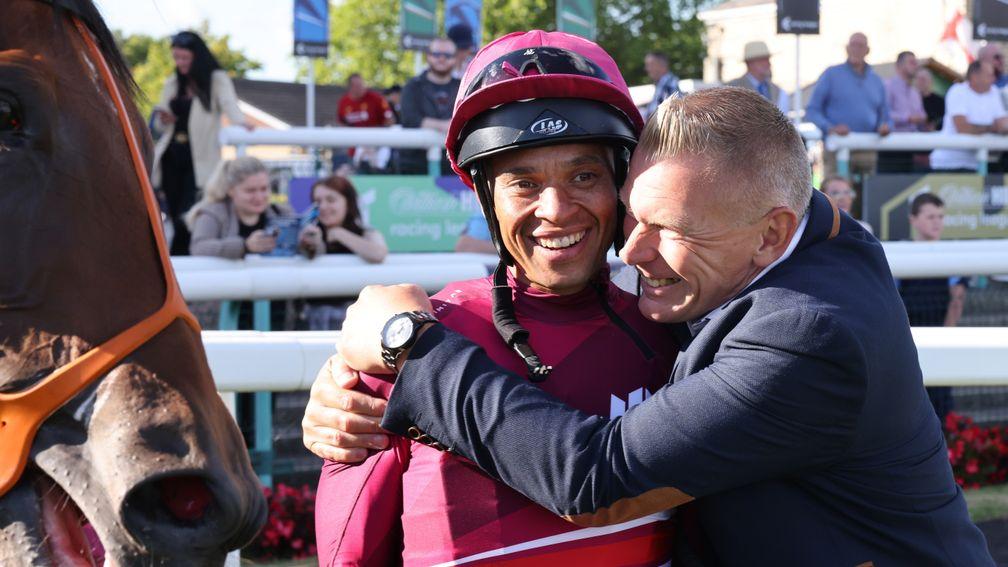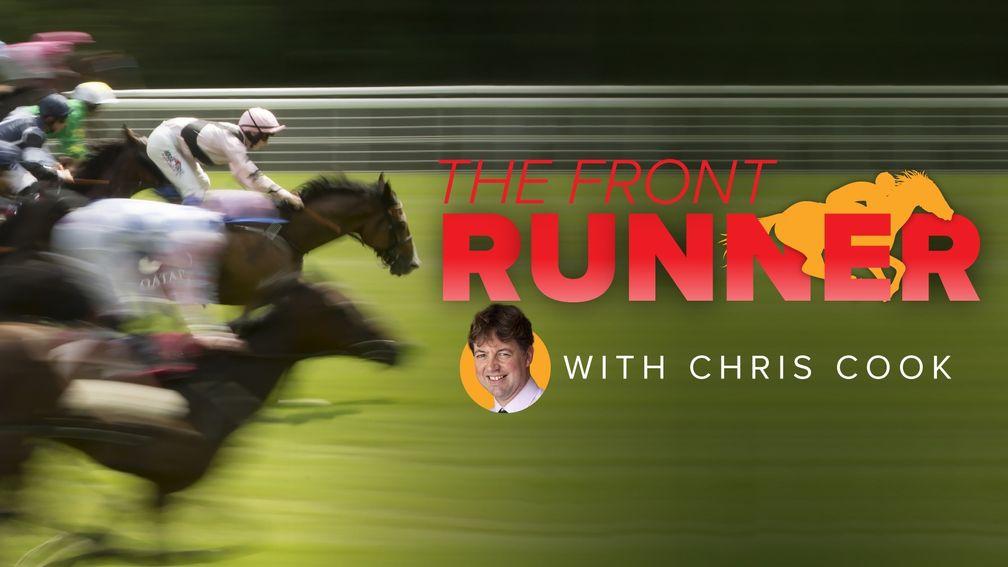Teamwork makes the dream work so give the Racing League a chance

The Racing League returned last week in a reformed format and it is fair to say that it divided opinion among racing fans.
Racing must embrace change in order to evolve and the Racing League is attempting to break new ground, just like we have seen in boxing, cricket and darts over the years, by using a different format in order to attract new fans.
I was on Town Moor working on behalf of ITV and I have to say, I don’t get what all the negativity is about. Competitive racing, double-figure field sizes, cracking prize-money to boot and all seven races on ITV4 and Sky Sports Racing.
The Racing League isn’t perfect, but it is just six days of the racing year and, if they do manage to crack it, it could do wonders in attracting the masses to the sport.
And they are working hard at cracking it too. After speaking to Jeremy Wray – the man behind the idea of the Racing League – last week, they’re clearly listening to feedback in order to make it as successful as possible as it was a much slicker operation than this time 12 months ago.
“We got a lot of feedback, some positive, some not so positive,” said Wray. “The main thing people seemed to have a problem with last year was they struggled to engage with the 12 teams. The suggestion of a regional format came up several times so this year we have seven teams representing different areas.”
Perhaps the concept is being misunderstood. This is not designed to threaten or change the overall structure of racing. It is taking the lower-grade racing and making it more interesting, more fun and more appealing and giving its own slot away from the big meetings and festivals to give it maximum exposure.

Wray added: “Midweek racing when you have got 90 runners and each-way betting in every race has to be a plus. Midweek racing is like watching third division reserves. We want to try something new which doesn’t take away from the big races, the big meetings.”
Putting the team concept (which seems to be the main cause for criticism) to one side, the racing at Doncaster last week was hugely exciting with the judge being kept on his toes with a number of photo-finishes. The quality cannot be knocked either, with a couple of horses coming from Glorious Goodwood, plus Group 1-winning jockeys and trainers. It potentially has it all.
Mattice was one of those on the lucky side of the photo-finish for the Tim Easterby team and his son, Will, was hugely complimentary of the prize-money.
“It’s great for Brian [Valentine, owner],” said Easterby. “He’s a great supporter of the yard and there aren’t many £4,500 yearlings that win a £50,000 handicap out there.”
The Racing League has a different vibe to a normal raceday. The weighing room felt much more relaxed – it is not often you see jockeys cheering on others from the sidelines – and there was no shortage of banter between the team managers.
Jockey Saffie Osborne, daughter of Wales and the West team manager Jamie, was surprised to see how the Racing League brought a more competitive side out of her dad.
“I can’t barely get him to go racing when he has a runner so the fact that he is here without a runner is remarkable,” she said. “Dad has been good friends with Jeremy [Wray] who obviously created this whole thing so I think Dad, kind of in his own way, feels like he’s part of it. It’s a great concept and great that lots of people are getting behind it.”
There are still obvious areas for improvement. A 2,000-2,500 strong crowd at Doncaster barely fills one stand. This is a Group 1 track able to host around 25,000 people, which is what we see at a bursting St Leger meeting. A crowd of that size at a smaller track would have felt fuller and generated a more electric atmosphere.
Being aired for the first time on ITV is huge for the Racing League to engage with a wider audience, but more work is needed on how to keep the racegoers on track feeling engaged and informed.
Raceday presenter Bobby Beevers did an excellent job on the microphone keeping the public updated with the scores and which team was leading the way, but perhaps more screens keeping racegoers up to date and informed may help assist further in the future.
There are always ways to improve and the fact they are broadcasting to such a wide audience is already a big bonus.
Change can be scary, but we should not be afraid of it. It’s very easy to point out the flaws in the Racing League, but there are umpteen positives. So give it a chance and you might just be surprised.
More must be done to help ease the burden of travelling
On Friday I drove from my home in Cheshire to Doncaster, Musselburgh and then back home. A 12-hour round trip covering 622 miles. To be honest, I was shattered.
A couple of hectic days, but thankfully a rare occurrence. However, it really opened my eyes to how tough it must be for jockeys and training staff getting themselves and the horses to the track on a much more regular basis.
Trainer Iain Jardine was at Musselburgh on Friday, but also had runners at Thirsk and Haydock which, given the size of his operation compared to the training giants, proved a logistical nightmare.
“We had ten runners in various parts of the country,” said Jardine.
“To safely transport ten horses is one thing, but when I declared a filly and a colt at Haydock too, I was deeply unpopular. They can’t travel together, you see, which means two drivers.”
On a busy raceday you also have to consider who and how many are back at the yard keeping the show on the road. Horses are a creature of habit and routine is key.
With fuel prices through the roof and the ongoing disagreements over prize-money, you can see how transportation of horses needs careful planning and it needs to be worth it.
“We have discussed running horses at one fixture per day,” added Jardine. “But when certain tracks suit certain horses and the race conditions suit, you have to put your best horse in the worst race.”
Cam Hardie and Oisin McSweeney were, like me, at Doncaster and then Musselburgh, but these jockeys are doing it day in, day out.
“It’s possibly the hardest part of our job,” said Hardie. “I didn’t get home till 10.30pm last night but had to be up at 5am this morning.”
Surely this is not sustainable. Perhaps reassessing the evening meetings and focusing more on twilight fixtures will help jockeys, trainers and stable staff bear this burden.
Starting at 3.30pm and finishing around 8pm could make a big difference to the lives of everyone involved in the sport, particularly to help jockeys and their time on the road.
Read more Weekender content:
Drastic action needed if we are to prevent more trainers from exiting the sport
History suggests Little Big Bear is no 2,000 Guineas good thing
'She is big enough at 20-1' - top tipster has one for the Great St Wilfrid (£)

The Front Runner is our latest email newsletter available exclusively to Members' Club Ultimate subscribers. Chris Cook, a four-time Racing Reporter of the Year award winner, provides his take on the day's biggest stories and tips for the upcoming racing every morning from Monday to Friday. Not a Members' Club Ultimate subscriber? Click here to join today and also receive our Ultimate Daily emails plus our full range of fantastic website and newspaper content
Published on 10 August 2022inComment
Last updated 10:06, 10 August 2022
- The whole shape of the Irish Flat season is being defined by one man only - and even his main targets lie elsewhere
- Analysis: Flutter and 888 have enjoyed contrasting fortunes but they still have things in common
- Only a baby step but an important one if racing is to keep some of its David v Goliath moments
- There are so many great betting opportunities on Saturday - here are my best bets including a very strong Curragh fancy
- Coolmore and Godolphin spare the sport some embarrassment - and not for the first time
- The whole shape of the Irish Flat season is being defined by one man only - and even his main targets lie elsewhere
- Analysis: Flutter and 888 have enjoyed contrasting fortunes but they still have things in common
- Only a baby step but an important one if racing is to keep some of its David v Goliath moments
- There are so many great betting opportunities on Saturday - here are my best bets including a very strong Curragh fancy
- Coolmore and Godolphin spare the sport some embarrassment - and not for the first time